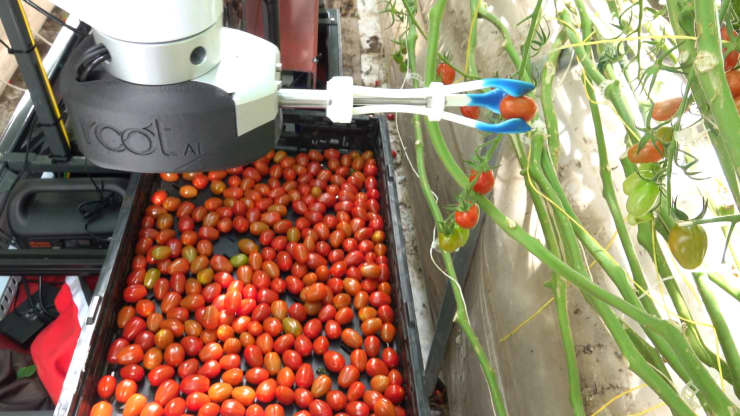Written by Riyana Razalee
The soilless farming industry is growing, not just in size but in crop diversity – and we’re excited. As the science behind soilless farming grows, so does the opportunity for farms to consider additional ways to create diverse revenue streams through crops besides leafy greens, microgreens, and herbs. While some of the larger greenhouse growers have been able to incorporate vegetables and fruits more easily than vertical and hydroponic growers, this may very well be changing.
As of 2019, leafy greens make up over 30% of the soilless farming industry’s market revenue share. Lettuce in particular is projected to have the highest CAGR between 2020 to 2027. This is because the cultivation time is noticeably shorter and farmers can sell at a lower average price in the market, thereby attracting their desired customer base. Furthermore, because of the low operation costs, leafy greens such as lettuce can achieve up to 50-60% in gross profit margins (grown non-organically).
For these farms, the technology is readily available and it lacks many traditional operational challenges. Because of this, the bottom line remains healthy and many soilless farms have chosen to focus on this class of product as their “low hanging fruit”.
However, are farms missing out on other opportunities?
Strawberries
Image source
Recently, attention has been shifting towards strawberry production. With growers like Oishii Berry raising $50m in its Series A round and Driscoll and Plenty announcing their collaboration to grow strawberries indoors, a lot of people are talking. As Oishii’s CEO, Hiroki Koga, stated, “We chose to start with strawberries because being in the industry for a long time, everyone was saying strawberry is the holy grail of vertical farming. And the reason being it’s the hardest crop to grow in a vertical plant environment”. Well, they’ve done it. Selling at $50 for a mere eight strawberries, they cater mainly to gourmet markets and grocers in New York City.
Prior to this, strawberries were known to be difficult to produce because of pest issues, fungal diseases, and weeding. But the technology of vertical farming has now moved the needle, making it easier for efficient harvesting and reducing fruit damage. The best part however, as exemplified by Oishii, is that the price point for strawberry sales is incredibly compelling.
Tomatoes
Image source
Tomatoes and soilless farms aren’t necessarily something new but many farms have been hesitant to enter this space due to several challenges. As a fruiting crop, being able to achieve the same productive growth indoors as it would outdoors has always been a main concern for growers. But soilless farming technology has improved significantly. Technology like Virgo 1, an agricultural robot which can detect ripeness better than humans and pick tomatoes without bruising them is helping to fuel this growth.
So where does tomato growing stand today? As of 2019, the tomato segment accounted for over 19% of the global share. The reason is quite simple: the average demand for tomatoes in all regions is very high. Earlier this year, one of the largest industry players, AppHarvest, began shipping its tomatoes to some of the largest grocers in the country: Kroger, Walmart, Publix – just to name a few. To indicate just how ripe demand is, they plan on shipping 45 million pounds of tomatoes each year from its 60-acre indoor farm in Kentucky. An additional factor that has catapulted this growth is the high global per capita consumption of tomatoes.
Wheat
Image source
Enter stage left an unexpected crop – wheat. A recent study showed that a vertical farm was able to produce up to 1,940 tonnes per hectar per year of wheat which equates to 600x more than current traditional wheat farming methods. Modelling the growth in a 10-layer indoor vertical facility under optimized artificial light, temperature, and carbon dioxide levels, researchers concluded that, “Wheat grown indoors would use less land than field-grown wheat, be independent of climate, reuse most water, exclude pests and diseases, and have no nutrient losses to the environment”.
That being said, it’s hard to run away from the elephant in the “vertical farming room”: energy costs. At the moment, it’s not economically feasible for vertical farms to invest in producing wheat. However, as costs continue to get driven down, farms that begin growing this crop could play a role in hedging food insecurity issues around the world.
Reducing the Cost of Growing Hydroponically through Diversification
As technology continues to improve, farms should not be afraid of exploring the diversification of crop mixes. There's the possibility of benefiting from increased revenue opportunities.
Now, we would be remiss in failing to note that not every opportunity should be taken. What works for one farm may not work for another. But there is no harm in seeing what could potentially be applied to your farm. As the industry grows, there’s the chance to grow with it – and we’re here to support it.

